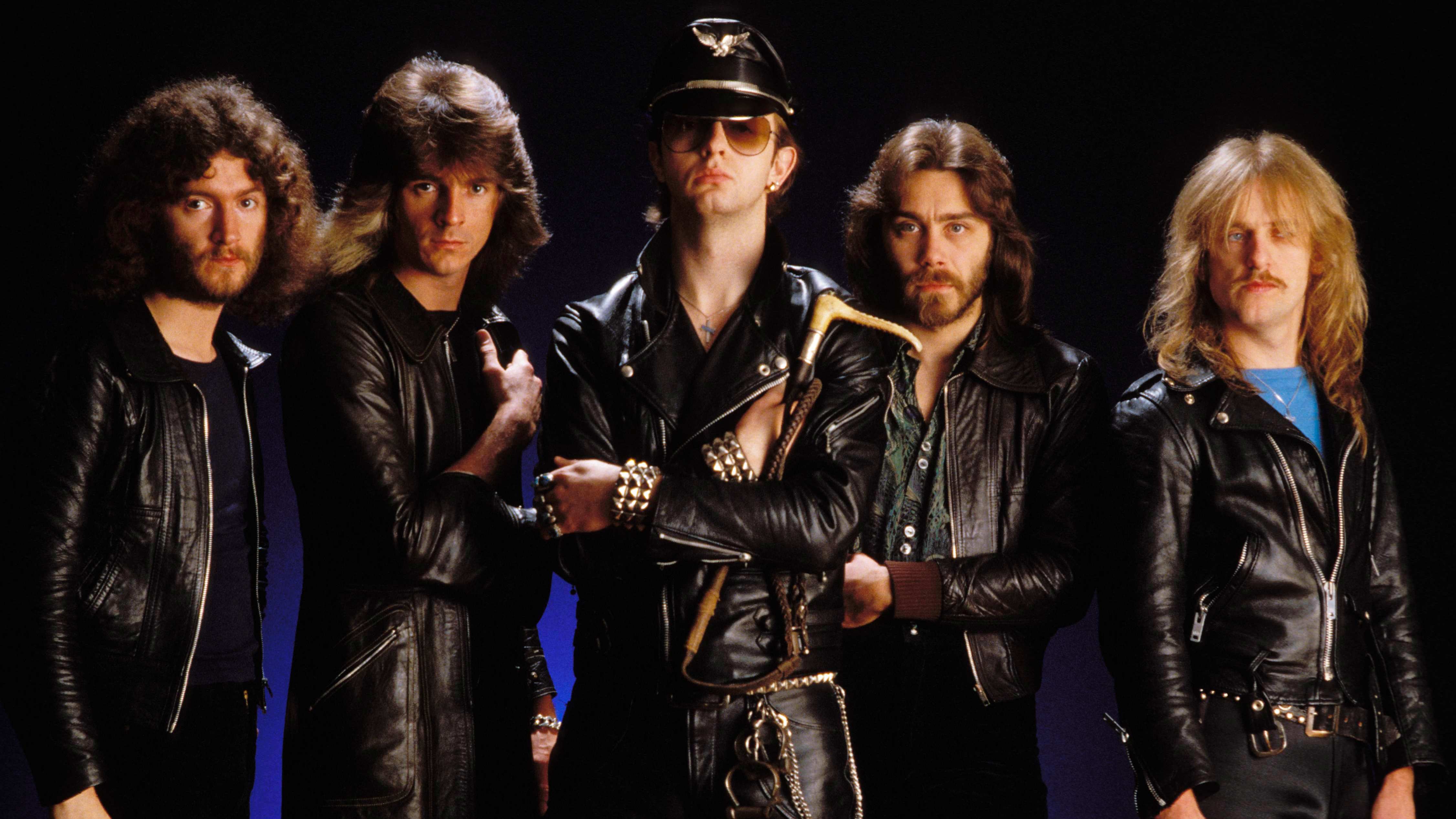Happy 80th birthday Mick Jagger: here's 5 of the Stones' finest moments on record
Nobody has moves like Jagger – follow his evolution in The World’s Greatest Rock ‘N’ Roll Band

The Rolling Stones were, in many respects, the yang to The Beatles' yin. While the Liverpool lads seemed bright and breezy, smiling and funny, the band whose two main characters hailed from Dartford in Kent, were dark, broody, and deliberately menacing. And while The Beatles played their fair share of American influenced R&B music, The Rolling Stones made it their musical raison d’etre.
The Stones, as they’ve universally come to be known, got together after Keith Richards, Mick Jagger, Brian Jones, Bill Wyman and Charlie Watts had met and jammed in the blues clubs of south west London.
Although initially led by Jones, a multi-instrumentalist and blues aficionado from Cheltenham who also named the band (after a Muddy Waters song), his position was soon usurped by frontman Jagger with songwriting partner and guitarist Richards.
Across their almost 60-year history the Stones has remained a two-guitar band. Keith Richards, always the musical glue that held it all together, has an amazing ability to gel with his opposite number, no matter how different that have been as players. When the aforementioned Jones quit and died in 1969 his place was taken by ex-John Mayall’s Bluesbreaker Mick Taylor, and in 1974 when the band’s excesses had become too much for him, Mick gave way to the group’s old friend and Faces’ guitarist Ronnie Wood. Ronnie was perhaps the guitarist the Stones always needed. Like Jones and Taylor, he was a fine slide player and could match Keith all day with rock riffs and bluesy solos.
While Stones’ records still receive regular radio play and even non-fans know the pop standards like Brown Sugar, Honky Honky Tonk Women, Jumping Jack Flash and (I Can’t Get No) Satisfaction, the following five tracks are less obvious gems that reveal how Richards and each of his six-string partners have left their mark.
1. Carol – The Rolling Stones/England’s Newest Hitmakers (1964)
Mick Jagger and Keith Richards had been to the same junior school but parted company when they moved to different secondary establishments. They met again when a 17-year-old Richards spotted Jagger, a year his senior, on Dartford’s train station platform brandishing Muddy Waters and Chuck Berry albums. Keith, carrying his guitar under his arm, reintroduced himself to his former school chum and the rest - to which the blue plaque marking the spot where they met attests - is history.
Richards has clearly done his rock ‘n’ roll homework, as he copies the Berry guitar style to a tee on his Epiphone Casino, while Brian Jones pumps out the boogie beat on a Gretsch
The Berry album is important to our story, since Chuck was undoubtedly Keith’s biggest guitar influence. On their 1964 debut album they covered his composition, Carol, and several other songs by American R&B and blues artists (including Bobby Troup’s Route 66, which many believed was a Berry song due to Chuck’s hit version).
Get the MusicRadar Newsletter
Want all the hottest music and gear news, reviews, deals, features and more, direct to your inbox? Sign up here.
Richards has clearly done his rock ‘n’ roll homework, as he copies the Berry guitar style to a tee on his Epiphone Casino, while Brian Jones pumps out the boogie beat on a Gretsch. It’s a performance brimming with excitement and vigor, and it helped lay down the template of two guitars woven inextricably together, which the band exploits so brilliantly to this day.
2. Little Red Rooster – Big Hits (High Tide And Green Grass)/The Rolling Stones Now (1966 and 1965)
They never displayed their blues roots again quite so overtly until 2016’s Blue & Lonesome
The only blues song to top the UK singles chart until Jimi Hendrix’s Voodoo Child in 1970, this Willie Dixon composition was Brian Jones’s masterpiece and, according to Stones’ bassist Bill Wyman, “one of his finest hours”. Featuring authentic blues slide guitar played by Jones, and a superb blues harp outro also performed by him, it was Jagger’s fantastically soulful delivery that undoubtedly shot it to the top slot.
All but impossible to dance to – the band had even aped the uneven bar lengths common in classic blues numbers – The Stones and manager Andrew Loog Oldham realised this was not a commercially viable route for the band, and they never displayed their blues roots again quite so overtly until 2016’s Blue & Lonesome.
On TV performances Keith Richards played acoustic guitar and Jones used his Vox Mark IV ‘Teardrop’ for his superb slide interjections, while Jagger mimed to Brian’s harp outro solo. Jones was a musical magpie, and could apparently play almost any instrument he touched. His totally believable bottleneck on Little Red Rooster is testament to the 22-year-old’s prodigious but ultimately wasted talent.
3. Sway – Sticky Fingers (1971)
The Rolling Stones have never been a ‘guitar solo’ band, Keith’s vicious Les Paul Custom outbursts on Sympathy For The Devil being a rare exception. But in 1969, when Brian Jones left the Stones and died just days later, ex-John Mayall’s Bluesbreakers’ guitarist Mick Taylor took his place. Having followed guitar legends Peter Green and Eric Clapton in Mayall’s group, Taylor took his first Stones gig, playing to 250,000 in London’s Hyde Park, in his stride. Mick’s style was fluent and musical, “way beyond his years” according to Richards.
While he too rarely took a lead guitar break, his tenure with the band marked a turning point in their sound and signaled a four-year run of chart-topping albums. These, which many cite as the group’s best work, included Let It Bleed, Sticky Fingers, Exile On Main St, Goat’s Head Soup and It’s Only Rock n’ Roll (sic). Taylor’s tight rhythm guitar and riff playing brilliantly melded with Richards’ less disciplined style, and can be heard on many of the band’s finest singles, including Honky Tonk Women, Brown Sugar, Tumbling Dice and Gimme Shelter.
This track from the 1971 album is well loved among Stones fans but little known outside of the inner sanctum. Jagger plays the almost Bonehead Arthurs-like rhythm guitar while all other six-string duties are left to Mick Taylor. Taylor is in his element here, weaving slinky slide fills around Nicky Hopkins’ piano licks and unleashing a fine slide solo in the middle. But Mick leaves his real moment until the song’s long play-out. He’s on fire here; his Les Paul screams out licks that wouldn’t be out of place in one of Cream’s better numbers. In fact many of the lines come straight out of the Clapton playbook, including repetitive pentanonic trills, big string bends and a beautifully controlled vibrato, leaving no one in doubt that Mick Taylor had earned his stripes and paid his blues dues.
4. Time Waits For No One – It’s Only Rock ‘n Roll (1974)
“I think it’s probably the best thing I did with the Stones"
Mick Taylor
This track is something of a departure for the Stones. There’s little of the earlier R&B influence to be heard; instead, its modern, Latin feel is rather more redolent of Santana, with Ray Cooper’s added percussion, Nicky Hopkins again providing distinctive piano lines, and Mick Taylor’s lengthy outro solo definitely tipping its hat in Carlos’s direction.
While Keith takes care of rhythm duties, Taylor answers Jagger’s vocal lines with heavily phased lead fills and motifs. But when it comes to his improvised single-string extravaganza that takes the song to its conclusion, instead of his usual lyrical blues style (as heard in Sway), he opted for a more scale-oriented approach, running up and down the natural minor on an almost clean neck pickup tone.
Taylor has cited Time Waits... as his favourite Stones moment. “I love that solo,” he told Guitar World. “I think it’s probably the best thing I did with the Stones. It’s not one of their hits; it was an album track. But it’s quite lyrical and it’s a bit different from a lot of other Stones songs. Because of the structure of the song, it pushed my guitar playing in a slightly different direction. It’s more – I don’t like to use the term Carlos Santana-esque because it sounds too pretentious, but I kind of played in a different mode. I was playing over a Cmaj7 to an Fmaj7, which aren’t chords the Stones used that much.”
It’s Only Rock ‘n Roll is Taylor’s final Stones album before quitting the group in 1974, but on Time Waits For No One he leaves his mark in style. Perhaps in deference to Mick, the Stones never played the song live.
5. Everybody Knows About My Good Thing – Blue & Lonesome (2016)
While the Rolling Stones and Eric Clapton might not at first seem like obvious bed fellows, they are in fact the perfect fit. While the various Stones members were finding their feet at the Crawdaddy and Eel Pie Island clubs in Richmond On Thames, London, up and coming players like Clapton, Ray Davies (The Kinks), Rod Stewart, Elton John and many others either went to watch, or joined in the jams.
So when Eric, who was recording at the same studio where the Stones were making their 2016 album of blues covers, walked in to find them jamming full blast, according to producer Don Was his jaw dropped and he picked up one of Keith’s guitars and joined in.
Clapton played on two tracks on the album – Everybody Knows About My Good Thing, and the Otis Rush classic I Can’t Quit You Baby. On the former, his smooth and sophisticated slide sits in stark contrast to the more organic playing of Wood and Richards.
Indeed, while Keith sits back and provides beautifully subtle rhythm fills, once Eric had set the song up with 12 bars of lyrical slide, Ronnie takes over with a spiky, gnarly but clearly heartfelt solo. Unusually Jagger didn’t play any guitar on the album, but his vocals are stunning throughout and his blues harp solos are good enough to evoke the legendary Little Walter.









